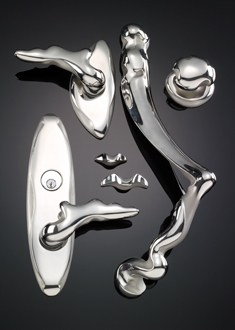It's no secret that people are living longer; just watch the Today Show and take note of the number of over 100 year old birthday greetings Willard Scott shares, and he is no spring chicken! And while we are living longer, we are also living healthier which means that designing private homes, independent and assisted living facilities and public buildings for the aging is also experiencing change. The stereotypical vision of the elderly as confused and weak people is a generalization that simply is not true. Today's seniors are active and aware and up-t0-date on current affairs, trends and technology. Did you know that, according to the American College of Surgeons survey in 2010, 1/3 of all surgeons were over the age of 55? (with age comes wisdom, something I certainly want my surgeon to possess!) But we, as designers and architects, cannot ignore the physical and mental changes that take place as we age. Changes that include:
- short term memory loss or worse (Alzheimer's and dementia)
- diminished mobility
- vision and hearing issues
- diseases that include arthritis or glaucoma, for example, that affect daily lives
Families can, and must, address emotional needs that include companionship, a sense of purpose and developing new interests. But designers and architects are tasked with addressing security and safety in regards to the above issues and help reduce the day to day stress many seniors experience in their homes. Technological advances have made it easier to deal with some of these issues. Simple things like larger buttons on phones, home security systems and keyboards, medical alert bracelets and single button emergency devices, along with structural items like wider doorways to accommodate walkers and/or wheelchairs and easy to grasp hardware are just a few of the ways that designers can make it easier for seniors to "age in place", the desire of most elderly people. Other solutions include grab bars in long hallways and baths, no threshold showers and doorways; lower cabinet heights with edges designed to prevent items from dropping to the floor and motion activated lights, window treatments etc.
And we cannot overlook the importance of appropriate color schemes that address anxiety and confusion or including personal mementos and familiar items in the decoration of interior spaces. As the "boomers" continue to age it will become even more important to keep abreast of both the emotional and physical needs of seniors when it comes time to design hospitals, community centers and medical buildings along with the decoration of interior spaces.

